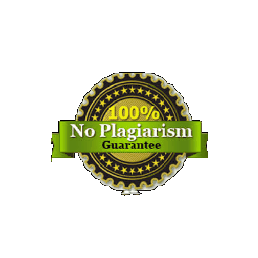Research Plan template
Research Plan template
Section 1: Topic Development
In the Module 2 Discussion: Research Area Exploration assignment, you identified some research questions that interest you. In this assignment, you will select one of those questions to focus on and develop a plan to research it. Identify your research question here and describe your topic in 1-3 sentences.
With your topic outlined, begin to explore it through keyword searches. Remember, you can use the Learning Commons Search Strategy Worksheet provided in the assignment to help get you started with this process.
As you move through different keyword search combinations and different databases, complete the table below by listing and providing brief notes on the most promising keyword/database combinations. Describe the results generated from your searches: do they seem relevant to your topic? How would you describe the types of sources listed? Are they academic articles? Dissertations? Or sources from popular magazines and other media?
| Keyword Combinations Used | Database or Website Searched | Notes |
Table One: Keyword and Database Combinations
Reflect on the results of your preliminary searches. What implications do they have for your research question? Should you narrow your topic? Reframe it? Incorporate new elements that you may have overlooked?
Now that you have preliminarily reviewed some of what is “out there” on your topic, draft a revised research question that reflects a more appropriate or more targeted intervention in your field:
Section 2: Building Your Notetaking Database:
“Scholarly reading serves a purpose. The goals of scholarly reading are to provide you with an understanding of the conversation, the tools to provide evidence that you are in the conversation, and a foundation from which you can contribute to the conversation. As such, scholarly reading is inextricably linked to effective and, hopefully, efficient notetaking. With interactive reading, you can listen to and interact with the conversation in your field. Interactive note taking provides you with a risk-free forum for experimenting with academic writing. As you take notes on others’ work, you are writing about your topic and experimenting with you academic voice before your internal critic awakens” from Demystifying Dissertation Writing, Single (2009)
In this section, you will develop a system to read individual sources deeply and identify themes, trends, and patterns across fields so that you can work in conversation with other researchers.
Step One: The Tool
Before you dive into specific sources, your first task is to consider what citation management software you intend to use and to justify why this citation management software will work well for your project. Review the options available to you (for example, Zotero, Refworks, or Endnote) and answer the questions below in a short paragraph:
What citation management software have you chosen? Why have you chosen it?
Step Two: The Structure
With a citation management software chosen, your next task is to outline your strategies for 1) taking source descriptive notes that summarize, evaluate, and reflect on individual sources, and 2) taking field descriptive notes that draw connections between sources to illuminate themes, patterns, and trends in a given field.
Source Descriptive Notes
You should take substantial notes on each item in your library. As Single (2009) observes, note-taking is the space in which you can summarize the core components of a research article and meaningfully engage with them.
Different researchers have different approaches to taking source descriptive notes. Single (2009) recommends using a note template in which students fill out key categories, such as the one in the snapshot below:
Taking a cue from Single, you might consider building a note template. Some suggested categories for your template include:
- a one-sentence summary of the article,
- a brief description of each of the core six research parameters (focus, rationale, scholarly context, method, findings, and implications), and
- a brief statement of how this article might relate to your particular research project.
Your purposeful readings of individual sources will help you make bigger claims about your field down the road. Galvan and Galvan (2017) recommend recording notes on core research parameters for each source and then incorporating these into a spreadsheet. When students read this spreadsheet horizontally, they are using a source descriptive lens.
When they read vertically by column, they are looking at research through a field descriptive lens that allows them to see a field in light of patterns that pertain to particular research parameters.
See the figure below for an example of what this table might look like.
| Source | Date | Aim
|
Methods |
|
A |
2007 |
To determine whether and how a student’s understanding of their own writing process changes over the course of a term
|
Qualitative Semi-structured interviews with seven students organized around three central questions
|
|
B |
2012 |
To explore the different ways students describe the particular challenges of their writing process |
Qualitative Analysis of 12 student reflection papers, coded to identify particular challenges in the writing process
|
|
C |
2018 |
To consider the extent to which structured reflective exercises benefit students |
Mixed Comprehensive assessment of over 100 student portfolios before and after a major curricular change
|
Table Two: Excerpt of Note-taking Table
Note that in table two, the student can provide a comprehensive summary for each article (provided they have taken notes on the other categories not shown here!). The green row reflects a horizontal way of source specific reading.
In addition the student can also make field descriptive claims about how what methods have generally been applied to study reflective writing assignments and, by attending to the date column, the student could make a claim about how these methods have changed over time.
One goal of this assignment, then, is to anticipate the ways of reading you will want to practice before you get too far into the reading itself.
In the space below, describe what the structure of your notetaking system will be. How will you keep source descriptive notes? Will you keep these via a template in a text box associated with the source? Will you mark up the source itself? Will you use a printed or digital copy?
Then, consider how you will use your source descriptive notes to develop a notetaking system that is able to describe trends in the field? Will you create an excel document like Galvan and Galvan (2017) suggest? Will you draft a rough outline as well (Example 4.2.1)?
Step Three: Research Plan
With your topic defined and your notetaking system envisioned, develop a plan of work for the next three weeks. Your primary goal is to break down a complex writing assignment, i.e., the Module 6 Research Area Primer, into more manageable tasks.
Below, you will find a table that lists the assignments leading up to drafting your Research Area Primer, but leaves blank the precise actions you will take or resources you will consult to help you meet those deadlines (e.g. library tutoring, document review, check-ins with your instructor, faculty advisors, etc.)
Module 3 has been completed for you. Look ahead to the assignments in modules 4, 5, and 6, and fill in the rows for the remaining weeks. Then, write up a brief defense for your plan, explaining why you have broken up the work the way you have.
| Course Module | Tasks | Resources | Assignments | ||||
| 3 | · Complete the steps outlined in this template.
· Read and take notes on at least five articles on my topic.
|
· Attend Library Workshop
· Review resources listed in Module 3 Reading & Preparation |
Discussion: Research Plan | ||||
| 4 | Discussion: Genre Analysis
|
||||||
| 5 | Discussion: Research Question
|
||||||
| 6 | Discussion: Drafting Your Research Area Primer | ||||||
Defense of Research Plan:
References
Single, P.B. (2009). Demystifying dissertation writing (1st ed.). Routledge: Taylor & Francis Group. ISBN: 9781579223137
You Need a Professional Writer To Work On Your Paper?

Have any Assignment?








